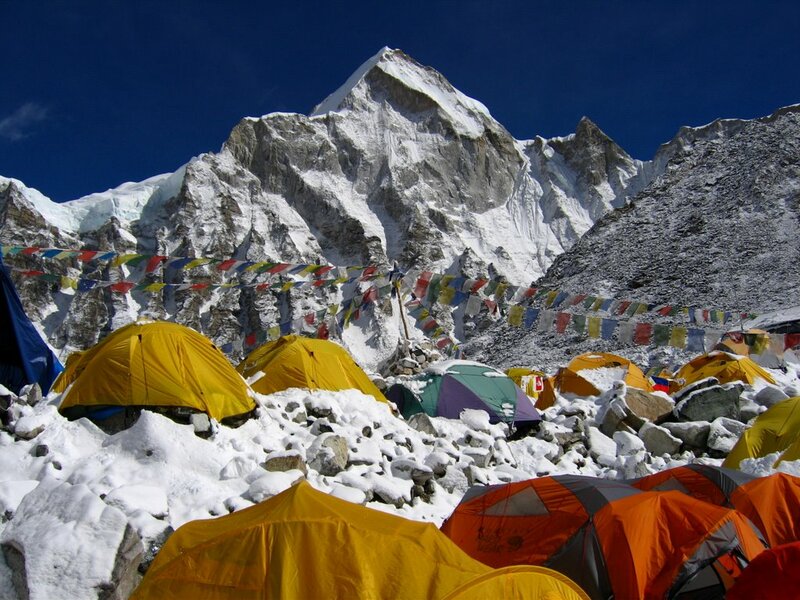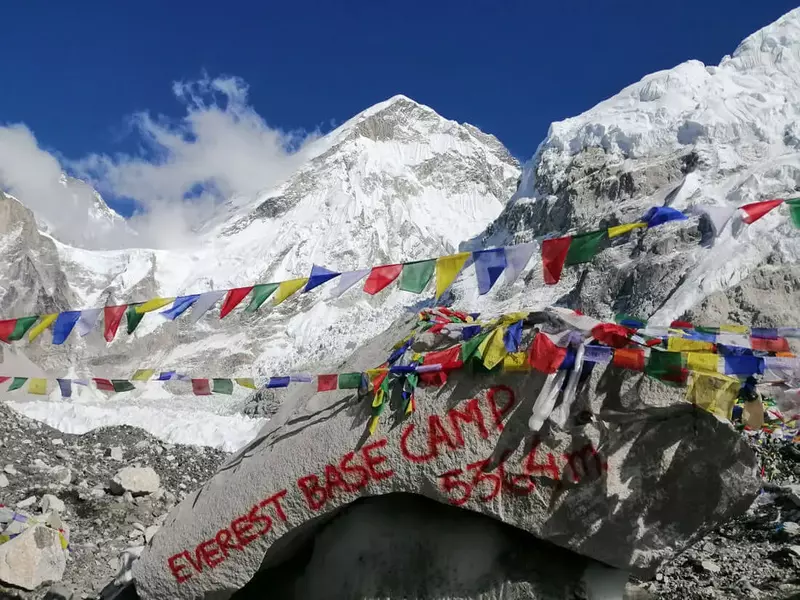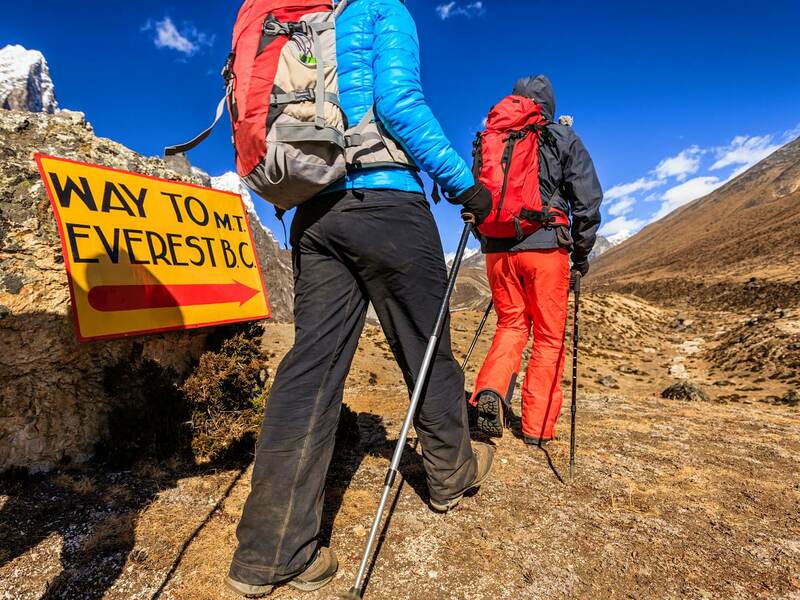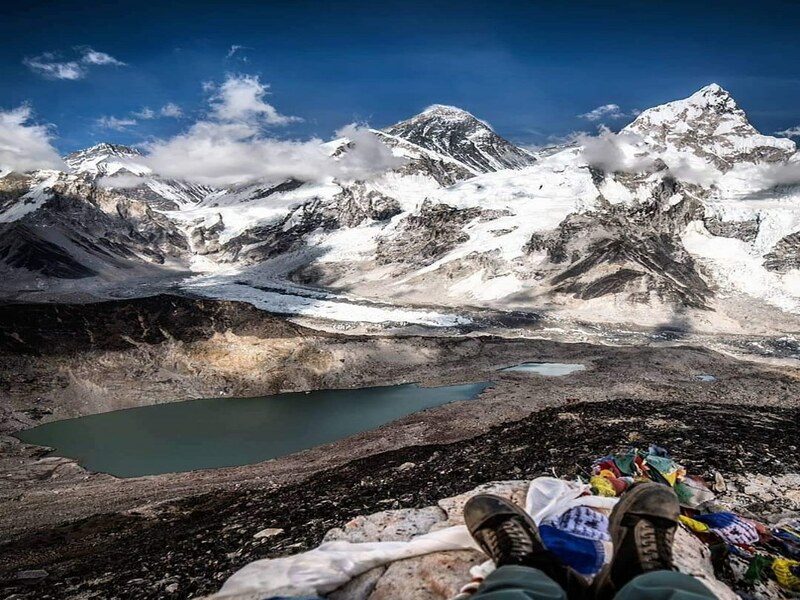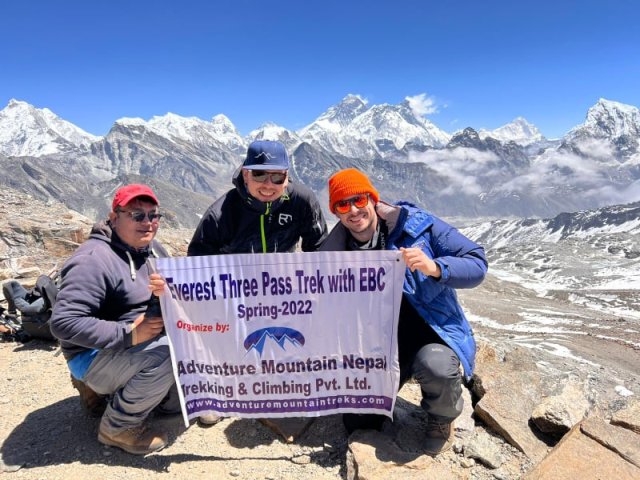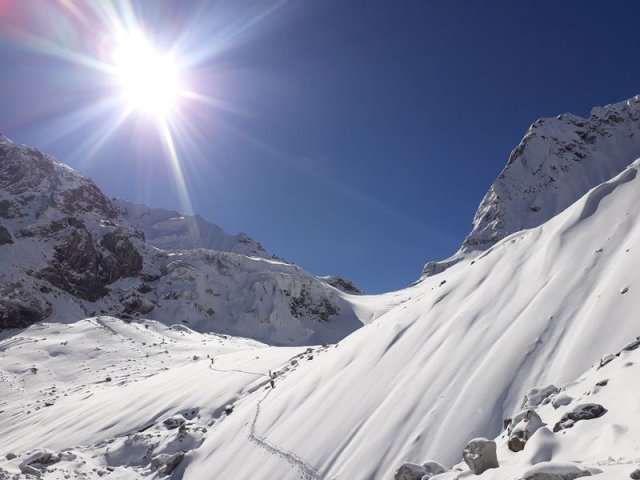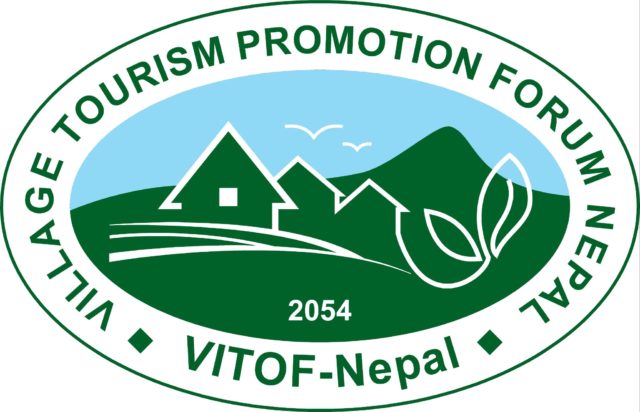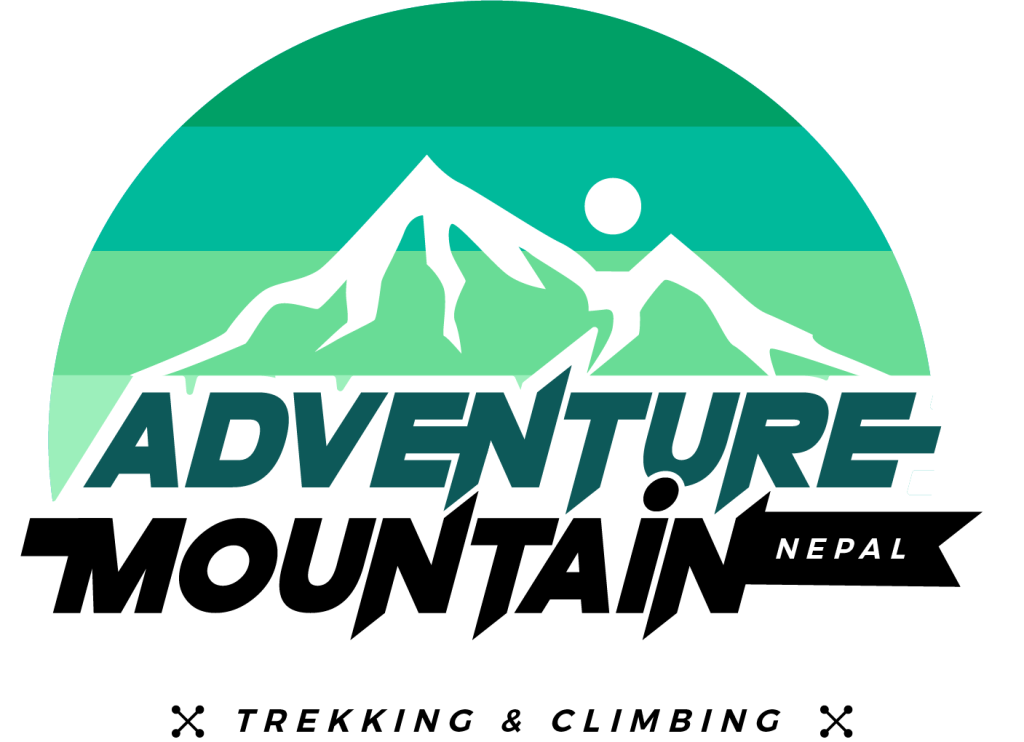Everest Base Camp Trek is the most phenomenal highest peak trek of the Nepal and whole world. Base camp of mighty Mount Everest lies in Khumbu Region at an altitude of (5,364m/17,598 ft) and it's geographical location is (28°0′26″N 86°51′34″E). The maximum altitude we will ascend during this trek is up to Kala Patthar (5,644m/18,519 ft)(The viewpoint of Everest Base Camp Trek). The forested valleys, high passes, glaciers, different cultures, traditions, and many snowcapped mountains passing along the way and every footstep towards the Everest add the utmost significance to traveling history. The heavenly landscapes of the Khumbu region and the most admirable site in the entire Himalayas are one of the grounds for this peak to be famous among countries and peoples. The ancient culture and glory in the atmosphere equally describe the friendly nature of the people in this area which adds spice to the journey.
Everest Base Camp Trek
World’s highest Mt. Everest Base Camp Trek
Trip Code
AMT - TREK - 101Best Season
Spring & Autumn
Trip Grade
⭐⭐
Max Altitude
Kala Patthar (5,600 m/18,373 ft)
Accomodation
Teahouses/Lodges
Transportation
Flight/Jeep or Bus
Meals
BB/Full Board
Group Size
Any

Introduction
Everest Base Camp Trek Overview
Everest Base Camp trekking starts from The Tenzing Hillary Airport which is also known as Lukla airport and is situated at an altitude of (9,337 ft / 2,846 m) from sea level. Guides, porters and several community people along the way assist trekkers. The charm of various group of people and elegance of beauty of nature all the way along makes the journey more fascinating. Then, you will find a beautifully crafted Himalayan town which is nestled along the crescent-shaped hill slopes which makes the walk more intense AKA 'Namche Bazaar'. It is considered as the administrative center and historical capital of the Khumbu region. Sherpa Museum at Namche Bazaar gives you insight of local culture and historical achievements like "Hall of fame" gallery of Sherpas who summited Everest, Photos of Edmund Hillary and Tenzing Norgay (first climbers to reach the peak).
Passing through the dynamic landscapes and thriving flora and fauna we can learn different Sherpa cultures and traditions on the major places like 'Tengboche', 'Dingboche' and 'Gorakshep'. It allows visitors to experience the warm welcome in different kinds of culture, ancient Tibetan crafts, get to know the traditional housing, clothing and enjoy the social gathering. The Sagarmatha National Park offers quality time to discover the colorful Rhododendron flowers, Juniper trees and a wide variety of wildlife including more than 118 species of birds, animals such as musk deer, the Himalayan tahr, the ghoral, the serow, and the Himalayan black bear. The rarely seen species such as snow leopard and red panda exists in this region. Hence, each enchanting step is direct toward the secret beauty of Mount Everest "Sagarmatha" in Nepali.
Trip Features:
- The Everest Base Camp trek is one of the best trek in the world. The trek starts after catching a scenic mountain flight from Kathmandu to Lukla.
- Kalapatthar is the highest point where you set foot on during EBC trek which is about 5,545 meter. Once you stand at the top of the viewpoint, the big Himalayas such as Mount Everest, Nupste, Changtse, Lhotse appears to be smaller. When the morning sunrise hits the mystic mountains, the astonishing view charms your heart and soul.
- The unique culture and tradition of this place itself is an amazing thing that pleases the travellers. Tengboche monastery, the oldest Sherpa celibate monastery, traditional crafts, lifestyle of Sherpa and monks is one of the interesting portions you encounter during the adventure.
- Flora and fauna in this route are intriguing and diverse then any other place. The forest in this area is a home for about 118 species of birds Himalayan monal, blood pheasant, red-billed cough. In addition some rare mammal species including musk deer, snow leopard, Himalayan black bear and red panda.
Day by Day Itinerary
Remember:
Our travel planner can customize the itinerary outline as per your duration of stay, purpose of holiday and your preference. Cost of the package also depends upon level of service (deluxe, standard & budget) and as per the group size. You can easily CONTACT US at any time for any queries.Cost & Dates
Inclusions:
- Required numbers of time Airport pick up and drop off as per your flight schedule (international and domestic). All required transfers in Kathmandu too.
- 3 Night’s accommodation in touristic town of Kathmandu in BB Plan (one can choose budget, standard and deluxe)
- A day sightseeing tour in Kathmandu by private vehicle, highly experienced city tour guide.
- All the entrance fees of UNESCO heritage sites.
- Kathmandu–Lukla–Kathmandu both way flight ticket.
- Standard tea house (lodge) accommodation during the entire trekking as per mentioned in itinerary
- Three meals per day (Breakfast, Lunch and Dinner) during the entire trek as per mentioned in itinerary followed by 3 times tea/coffee per day. One can choose the meal from menu there.
- A duffel bag, Trekking Map and trekking pole Sleeping Bag, Down Jacket, Nepali SIM card (Rental basis, if needed)
- Sagarmatha (Everest) National Park Fee
- TIMS (Trekker’s Information Manual System) permit
- An experienced government certified local Trekking Guide
- Required numbers of highly experienced trekking porters (2:1 ratio)
- Staff’s foods, salary, insurance, accommodation, meals, transportation etc
- General first Aid Kit
- A certificate of appreciation (experience certificate) after completing the Trek
- Farewell Dinner in Kathmandu with cultural program.
- All government taxes and applicable paperwork
Exclusions:
- International Airfare
- Personal Travel Insurance (essential for high altitude trekking)
- Lunch in Kathmandu
- Personal expenses for bar, laundry, personal shopping, internet usages, hot shower and battery charge during the trek.
- Alcoholic beverage
- TIPS for Staff


